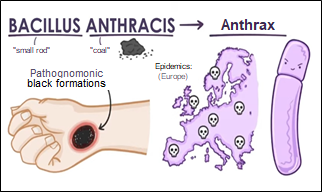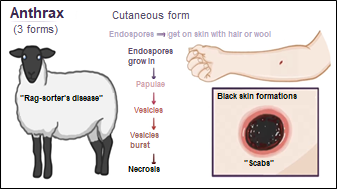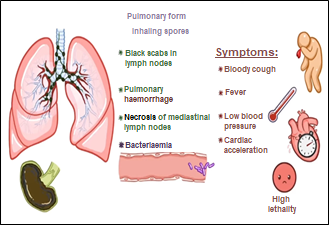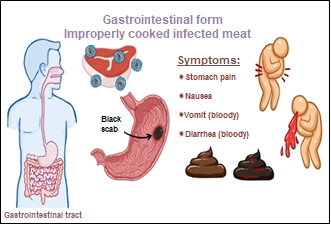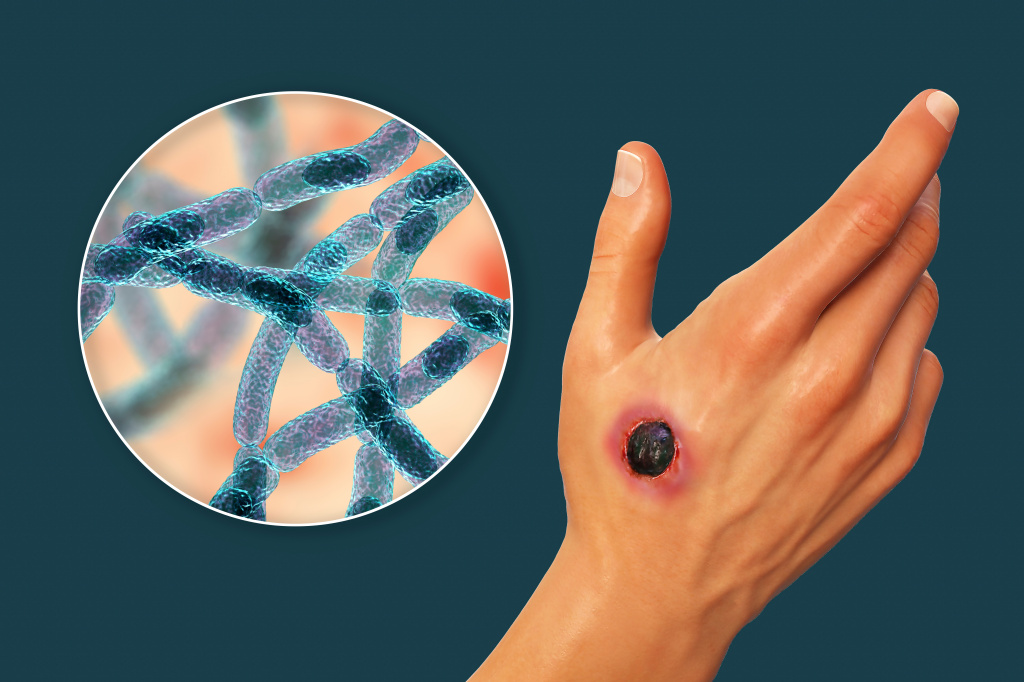
According to the statistics, cases of anthrax are registered in people and animals almost every year in Kazakhstan. The last case was registered on August 28, this year at the territory of Ushkarasu settlement, Zharkain district, Akmolinskaya region. All diseased employees of Ushkarasu LLP had contact at dressing and disposing meat of sick animals.
Due to worsening of epidemiological situation with anthrax at the territory of our Republic, we present information on this especially dangerous infection with high lethality rate.
ANTHRAX – acute, especially dangerous infection, also known as ulcerative gangrenous dermatitis.
Causative organism: spore-forming bacteria (Bacillus anthracis). Spores, formed in outside environment, in vitro, are highly resistant to physical and chemical exposure, and produce virulent poison – exotoxin after entering human or animal body.
Infection sources: diseased livestock (bovines, horses, donkeys, sheep, goats, deer, camels etc.). Diseased animal excretes causative organism into environment with urine, feces, saliva.
Infections routes:
- Nonpercutaneous (through damaged skin at caring for diseased animal, slaughtering animals, processing hides, wool, fur contaminated by spores of causative agent);
- Air-dust (inhaling infected dust, bone flour, containing spores);
- Alimentary (eating raw / insufficiently thermally treated meat of infected animal).
- Human-to-human infection routes were not observed.
Clinical forms and symptoms:
- Cutaneous (most frequent) – first, a red itchy spot is formed on the skin, which then transforms into vesicles with blood, and further into scabs / anthrax carbuncles (black center, yellow edges, purple bank).
- Pulmonary (rare) – fever, chest pain, breathlessness, blood pressure drop, cardiac acceleration, bloody cough (scabs in lymph nodes).
- Gastrointestinal (very rare) – fever, pain in the stomach, bloody diarrhea and bloody vomit (scabs in ventriculus).
Lethality may vary from 10% (at cutaneous form) up to 100 % (at pulmonary form).
Treatment, regardless of disease form, is in using specific anthrax globulin and antibiotics.
The earlier treatment is started, the higher is the chance for benign outcome!
Prevention lies in conducting veterinary (vaccination of animals; revealing and isolating sick animals, burning their carcasses; disinfecting infected facilities by chlorine-containing preparations; destroying animals, infected with anthrax and their products) and medical-sanitary measures:
- Do not purchase meat from individuals at unregulated markets!
- Do not purchase meat without veterinary stamp and provision of accompanying documents by the seller.
- Use hand gloves when working with raw meat.
- Thoroughly cook meat before eating.
- If you live in endemic area or work with soil, animals or materials, which may contain causative agents of anthrax, you need to discuss possibility of vaccination with your physician.
- If you work in agricultural sector or in other environments, which present risk of contact with bacteria, wear gloves and protective clothes.
- If you have signs of infection, immediately seek medical advice.
- Active 2-week medical supervision of persons, which contacted diseased animals of contagious material.
Remember! Prevention measures will help reducing the risk of anthrax infection, especially if you are in high risk zone.
